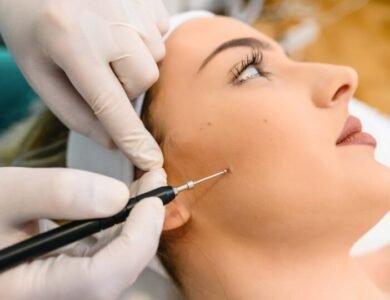Why Is My Hair Thinning? Signs to Look Out For

Experiencing hair thinning can be a distressing issue for many people. It’s essential to understand that thinning hair is a common concern and can be influenced by various factors. Whether you’re noticing more hair on your brush or your ponytail feels less full, identifying the signs early can help you take proactive steps. In this article, we’ll discuss the potential causes of hair thinning, the signs to watch out for, and how a stylish haircut like a low taper fade can help you manage your appearance during this time.
Understanding Hair Thinning
Hair thinning occurs when the hair growth cycle is disrupted, leading to less hair being produced. This can happen for a variety of reasons, including genetics, hormonal changes, nutritional deficiencies, and environmental factors. Understanding these causes is crucial for determining the right course of action to improve your hair health.
It’s not uncommon for people to experience some degree of hair thinning as they age. However, paying attention to specific signs can help you identify if your hair thinning is due to a more serious underlying issue.
Signs of Hair Thinning
Recognizing the early signs of hair thinning is essential for addressing the problem effectively. Here are some common indicators to look out for:
Increased Hair Loss
One of the most apparent signs of thinning hair is an increase in hair loss. If you notice more hair than usual on your pillow, in your shower drain, or on your hairbrush, it might be time to investigate further. It’s normal to lose around 50 to 100 strands of hair per day, but if you’re shedding significantly more, that could indicate an issue.
Changes in Hair Texture
Another sign to consider is a change in the texture of your hair. Thinning hair may feel different, appearing finer or less voluminous. If your hair no longer has the same thickness or bounce, it may be a sign of thinning. This can also lead to difficulty in styling your hair, making it look limp or flat.
Widening Part
If you’ve noticed that your part seems to be getting wider, it might be an early indicator of hair thinning. A widening part can be a subtle sign that hair follicles are becoming less active and that you’re losing density in that area.
Potential Causes of Thinning Hair
Understanding why your hair might be thinning can help you take appropriate action. Here are a few common causes to consider:
Genetics
Hereditary hair thinning, often referred to as androgenetic alopecia, is one of the leading causes of hair loss in both men and women. If your family has a history of thinning hair, it’s possible you might experience similar issues. In men, this typically manifests as a receding hairline, while women may notice overall thinning.
Hormonal Changes
Hormonal fluctuations can significantly impact hair health. Conditions such as pregnancy, menopause, and thyroid disorders can lead to changes in hair growth patterns. If you suspect that your hair thinning is related to hormonal changes, consulting with a healthcare professional can help identify the underlying cause.
Nutritional Deficiencies
A lack of essential nutrients can also contribute to hair thinning. Proteins, vitamins, and minerals such as iron, zinc, and biotin play a vital role in hair health. A well-balanced diet is crucial for maintaining the strength and thickness of your hair. If your diet lacks these nutrients, consider incorporating more whole foods, fruits, and vegetables.
Stress and Lifestyle Factors
High levels of stress can lead to a condition known as telogen effluvium, where hair follicles prematurely enter the shedding phase. Lifestyle factors such as lack of sleep, smoking, and poor hydration can also affect your hair’s health. Managing stress through relaxation techniques, regular exercise, and proper self-care can help improve your overall well-being and hair health.
Visit: mediatakeouto.com
How to Manage Thinning Hair
If you’re experiencing signs of thinning hair, there are steps you can take to help manage the situation. Consulting with a dermatologist or trichologist can provide valuable insights into your hair health. They may recommend treatments or products designed to stimulate hair growth.
In addition, trying out different hairstyles can make a significant difference. A taper fade haircut, for example, can create an illusion of fuller hair and is an excellent way to manage a thinning appearance. This stylish cut offers a clean, fresh look while requiring minimal maintenance.
Conclusion
Hair thinning can be a challenging experience, but understanding the signs and potential causes can help you take proactive steps toward maintaining your hair’s health. By recognizing increased hair loss, changes in texture, and a widening part, you can address the issue early on.With proper care, a balanced diet, and the right haircut like a taper fade, you can navigate this phase with confidence. For more information on hair health and styling tips, visit taperfade.co.uk, your trusted source for all things related to hair grooming and care. Remember, you’re not alone in this journey, and there are options available to help you feel your best!






